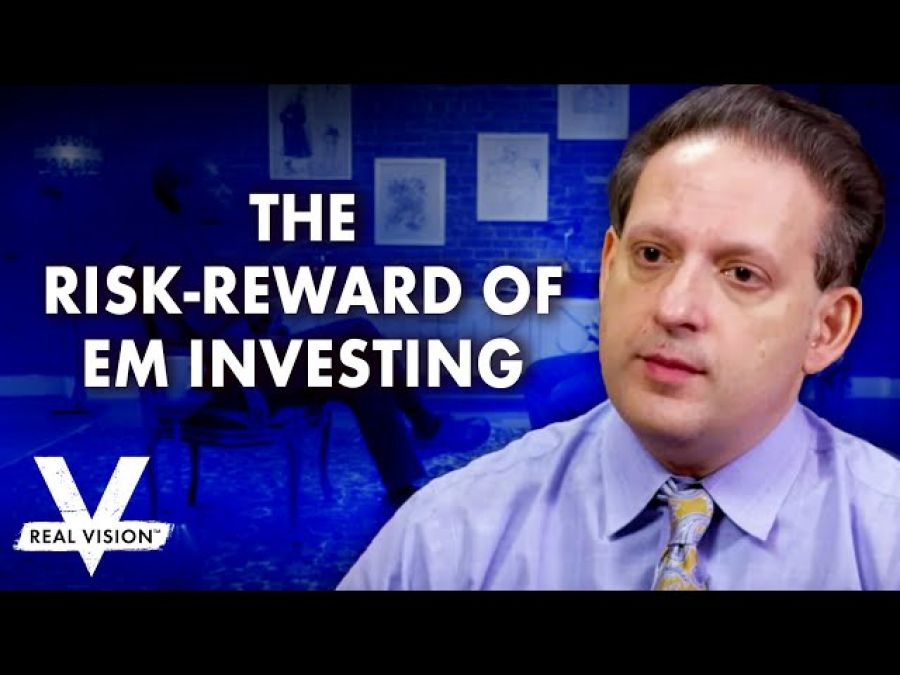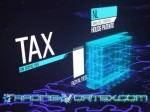Video Transcription:
Emerging Markets: The Dollar Debt Debacle (w/ Rashique Rahman)
ED HARRISON: Rashique Rahman, welcome to Real Vision. RASHIQUE RAHMAN: Thank you, pleasure. ED HARRISON: We've known each other a long time, and you're my go-to guy when I'm thinking about emerging markets. I'm really happy to have you on Real Vision here. In fact, actually because you're at a transition, you've had much time on the buy side and the sell side, but now you're going independent. This is a perfect time to get an unvarnished view of what's happening in emerging markets. RASHIQUE RAHMAN: I like to think of myself as someone who calls it like I see it. I think that's been my reputation over the years, but it's a great time to be transitioning, more independent, setting up my own fund in the coming months. I'd love to share my thoughts with you on how I'm seeing markets and EM in particular. ED HARRISON: Great. I want to get a 30,000-foot view, but then maybe also get some positioning, asset allocation from you in terms of what you're thinking about right now in 2020. RASHIQUE RAHMAN: That sounds great. Absolutely. A big part of the setup for the fund strategy will be an overlay of investment themes coupled with a more systematic approach. I'll certainly relay my overall thematics for the markets and what that means for investment opportunities in this space as well. ED HARRISON: When you talk about that overall thematic, I'm thinking about the conversation that we just had in terms of how you break down different parts of EM, because basically, you told me that when people think about emerging markets, a lot of people think in global term, emerging markets, but within emerging markets, actually, there's a lot of differentiation, and people should be thinking in those terms. RASHIQUE RAHMAN: I think that's a great place to start and let me step back a little bit. Take us back to the late '90s and get us to where we are now and think prospectively as well. EM used to be beta to global growth trade in a sense. If you thought that global conditions were very supportive, growth was robust, and EM was a great investment opportunities, a boom and bust in that sense. That type of strategy worked really well. If we think about the genesis of EM as an asset class over the last, say, 20-25 years, the late '90s was really an important time, we were getting out of successive crises in the '90s, Tequila Crisis amongst them, we saw institutionalization of some financial sector reforms, which included opening up of these economies to the rest of the world. That was really important. It led to a rush of inflows into these economies, and this was also happening at a time when we saw the accession of China to the WTO, and as well successive months monetary policy easing, particular by the Fed over the 2000. Late '90s 'til mid-2000s was a really good time for EM. We saw a rise in commodity prices as a result of China's incessant demand for commodities and other imported intermediate goods, that was very beneficial for EMs since they opened up. It was a virtuous cycle that was manifesting in the late '90s, early 2000s for EM, and that was the golden time for EMs. ED HARRISON: As you say that, I'm sensing buttons coming here as always. RASHIQUE RAHMAN: A big one, and that all changed in early 2010s. You saw essentially, a slowing down of China, it shifted more towards a consumption orientation rather than the fixed asset investment orientation. Growth began to slow in China in part as a result of that. You also saw an erosion in competitiveness for EMs. We'll talk about this a lot during our talk. One of the main indicators I look out for EMs is the real effective real trade weighted exchange rate. That's a really good indication of course of measure relative price. For me, it's an indication of underlying competitiveness. The big problem for EMs is that they lack competitiveness. That's the real issue. Going back to the '90s, 2000s, what you saw was it's easy to grow. You didn't have to do much. This was perfect opportunity for EMs to institute deep structural reforms, get them on a much stronger growth footing for the future. They didn't really need to do that. Now, they're in a position where their competitiveness is challenged. They're struggling for growth now, less reliant on these prior sources of growth like China demand and things like that. They're struggling. EMs in general is struggling for growth. If you look at the forecasts for EM growth, this year is around 4%. That's deceptive. If you take India, China out, let's say, to the bigger EMs, EM in general is growing around and that's not much more than developed markets. The market are calling it the secular stagnation of EM and that's, I think, appropriate to consider that if you look at growth in particular. EMs have been relatively challenged. I think that's an issue that's going to persist in the coming years. ED HARRISON: When you look at that picture, I know that you are looking at challenges on three different fronts. You talked about commodity issuers like Russia, you were talking to me about the people who have the external imbalances that could come to. Talk me through those three groupings that you talked about, first and foremost, I think with the external imbalance of countries because those are the ones where you might see some crisis. RASHIQUE RAHMAN: Yeah, those are the ones that tend to be most in the headlines, I guess you could say. If you think about the challenges that EMs in general face, and I don't want to take that notion too far, because part of the thesis that I'm presenting here is that EMs were considered a unitary block in the past, and I don't think that we should be thinking about them in that way going forward. There's a lot of differentiation, the dynamics are very different across countries. I think it's more important, instructive and beneficial to think about them on a standalone basis rather than as a broad grouping. I don't want to take that notion too far. If you think about EMs from the standpoint of the challenges that they face, I'd put them in three broad groupings. Those that are suffering from internal external imbalance, Argentina and Turkey are prominent in that grouping and they've seen a massive adjustment in 2019. They'll still suffer the repercussions of that, I believe, over the next year or two. Then you have the broadest grouping, which is I call countries that are in the middle-income trap. This is really a manifestation of what I talked about before, not really taking advantage of the virtuous cycle to institute structural reform. ED HARRISON: Chile, would they fall into that grouping? RASHIQUE RAHMAN: Yes, absolutely. I think the poster child really for this group are Mexico and South Africa, we've seen a real decline in underlying investment activity for various reasons, and it's going to have repercussions for growth going forward. They also tend to be to the more prominent EMs as well, so I think they're really instructive in terms of this broader grouping. I think the discussion on EM really centers around this. It's the middle-income trap for EMs. They're stuck in middle income territory, income per capita has been stagnating, and it's causing social disruption. We'll get to that in a second. I think that's a really important sub-theme. ED HARRISON: That's why I was thinking about Chile in particular. RASHIQUE RAHMAN: That's right. Obviously, we've seen massive protests and now, they're moving to reform the constitution, that's going to take time. We've seen that spill over into Colombia as well. I think it's a real product of this fraying of social contracts, I like to call it, and then what you're seeing manifest, particularly an EM, it's not going to go away. In fact, it's likely to intensify and it's a part of this middleincome trap that the EMs are in. This essential notion is that look, you guys can, for lack of a better phrase, pad your pockets all you want, but give us prosperity, give us growth. That's the underlying right social contract, and we're seeing fraying of that. You're not providing us with the prosperity that we are promised and so you get protests and social tension and those sorts of things. You're seeing it in Hong Kong, you're seeing it in terms of the manifestation of political changes in the developed world as well. Populism and those things. It's pervasive. It's not just an EM thing. The issue for EMs is that you have relatively young populations, and you need the growth. It's much more intensified in the case of EM, and I think we're going to see a lot more disruption there. That's the middleincome trap story. Part of it is this fraying of social contracts that we've started to see and we're likely to see manifest in much more intensity going forward. Chile, Colombia, we talked about in terms of some of the tension, those certainly flag prominently South Africa as well. The way you can think about it is mapping measures of inequality trajectory and income per capita, government effectiveness or sense of corruption, those are good metrics to look at to see how countries rank on a relative basis. Countries in Latin America, unfortunately, favor quite poorly in that regard. South Africa, Turkey as well, countries in Central Europe, not as much. You're going to see this dislocation, I think across, I think countries like, not really Chile or Colombia is prominent, but Mexico, South Africa, going forward are going to be much more in the spotlight as far as how countries are dealing with that middle-income challenge, let's say. ED HARRISON: What's the third group that you were talking about? RASHIQUE RAHMAN: It's the ones that have been much more reliant on commodities. It's a relatively large group, but I like to think that it's narrowing. A country like Russia is the poster child for that, the heavy reliance on hydrocarbons, particularly-- and I think it's really interesting that the reshuffling recently of the government cabinet by Putin and the focus on investment spending to bolster growth going forward, I think that's a positive step ultimately. Russia has been known for being really fiscally prudent but at the sacrifice of growth. They've been making promises for years about investment structural reform and those sorts of things. I think now, they seem to be redoubling their commitment to that. I think that's a good sign. It's a good step. They made other strides to decouple, delink the economy from oil as relates to the budget, so those are all positive moves actually and should benefit Russia if they follow through in not only delinking Russia from oil, hydrocarbons in general, this commodity linkage, but also fostering much more favorable growth conditions. Russia could be a very positive story in that respect. ED HARRISON: What's interesting about what you just said is, is that you're talking about this cabinet reshuffle from a real perspective. It's not just so that Putin can remain in power, that actually behind it is some thinking about Russian growth and actual real economy. RASHIQUE RAHMAN: Absolutely, absolutely. From an investor perspective, you think about it from the real aspects impacts. From that standpoint, what we're seeing is a move towards bolstering growth, reducing the ties to commodities, and that's a positive thing. Absolutely. ED HARRISON: Now, just to complicate things a little bit, I wanted to make an overlay because I was just thinking about something that you talked about, like the 3Ds in terms of thinking about emerging markets. RASHIQUE RAHMAN: Absolutely. To me, the broader thematic for EM, and this hopefully resonates with listeners, viewers is dollars debt and demographics. To me, that's an enduring thematic for EM. If you're thinking about EM at all, these three aspects figure in prominently not just now but in the future. We should talk about each of those aspects. I think they're very important. To be honest, they're not very well understood even by EM investors and experts. They don't understand these dynamics that well. ED HARRISON: Because this is where the rubber hits the road. Let's take an example, since you highlighted Mexico and South Africa. Let's look at Mexico in particular, in terms of this middle-income trap, but also in terms of the 3Ds that you were talking about and how that manifests itself in terms of investment opportunities for people. Talk me through an investment in Mexico given those preconditions. RASHIQUE RAHMAN: Well, let's step back first. Let me predicate the discussion on individual countries on the broader dynamics that are at play. I think this is super important for people to understand and appreciate, no pun intended, as far as currencies are concerned, but the dollar is a prominent aspect of investing in EM and I think we should dive into this a little bit because it's very important and it's not very well understood. I think people are coming to understand it a little bit better, but hopefully I can shed some light on the importance of the dollar for EMs. When we think about the dollars, we think about first and foremost, dollar denominated debt. That's what people think about for EMs and yes, that's been something of a concern on the face of it. If you look at Institute of International Finance, they measure global debt and EMs have seen a significant rise in overall indebtedness, something like $70 trillion in debt to 200% of GDP. That's near double what it was 10 plus years ago. It's been a significant rise in indebtedness. ED HARRISON: In terms of overall global indebtedness, is that what's driving indebtedness increases? RASHIQUE RAHMAN: That's a good question. To a large extent, yes. It's been China, China's account for something like 40% of that rise. Other EMs, not so much because they're relatively small from an economic standpoint. What we've seen is a significant rise in dollar denominated debt from non-financial corporates in EMs so from 3 trillion 10 years ago to 6 trillion now, that's a massive increase. On the face of it, it seems quite concerning. To me, it's not a concern. That's the stop of dollar denominated debt. EMs have something on the order of 8 trillion dollars in hard currency assets, more than offsetting the rise in external debt that we've seen. The rise in external, that was 3 trillion to 6 trillion and most of that was due to the rise in corporate dollar denominated debt, about 80% of that was in dollars. The point is that you can't just look at one side of the balance sheet, 6 trillion dollar denominated debt, you've got something like a trillion in dollar assets that offset that. There's plenty of dollars there to pay down the debt if it's needed. The question becomes about liquidity provision, having the dollars when the dollar payment is due, that's the real issue. It's a liquidity consideration, not a solvency consideration as far as EM is concerned. ED HARRISON: We were talking about this before the broadcasting, I was telling you that I had seen a podcast, I've listened to a podcast where Perry Marilyn was talking about the money view about settlement risk being the biggest risk in liquidity crises. He thinks repo, in particular, is a nexus of a liquidity crisis, because the Federal Reserve and other regulators have pushed people into secured credit as the place in order to get in liquidity in repo in particular. As a result, a lot of this Eurodollar offshore funding is happening there. To the degree that you have a risk to these corporates, it's going to show up in terms of their liquidity provisions in markets like the repo market. RASHIQUE RAHMAN: Absolutely. The way I like to think about it, there's three legs to the stool in a sense. There's the stock of debt. I don't think that's a major issue, it varies by jurisdiction. Some countries have enough dollars to pay down the debt, some have last, those things. That's one leg of the stool. You do have a high redemption level this year, something like 6 trillion of that dollar debt is due this year. It's a high rollover risk this year. That gets to the second point, which is liquidity provision. It's not just the cost of the dollars which is relatively low now and that's why you're seeing this amount of issuance in the dollar market for EMs over the last couple of years, and this year is no exception so far. The cost is always one thing, but the access to the dollars is another one which you rightly point to. There are some offsets to that, which is that central banks have dollar FX reserves that they can use, they can provide swap lines and those things which many countries have done of late to provide some needed liquidity to say corporates or their entities, domestic entities that need the dollars. They can't do that well at limit, but it does provide an out for times of dollar stress, when dollars are less available. A good way to look at this is to look at the cross-currency basis. If you see a tightening in cross currency basis in dollars, that tends to be a sign of scarcity of dollars. We're not really seeing that right now. We haven't seen it for many, many years since 2011-2012. It seems to be okay on that side, but that's something to monitor for sure. I think that that's likely to be a source of significant strain for not just the EMs, but global markets when the plumbing really starts going haywire. I want to talk about the third leg and that's also one that's very much misunderstood and that's just that dynamics in the dollar. We keep talking about dollars as relates to EMs, but it's so important. EM fortunes are largely tied to the dollar, believe it or not. That's not just in terms of the stock of debt or the availability of dollars, but the direction of the dollar. The dollar strengthens or weakens, that has a pervasive impact on EM growth conditions, let's say. The reason why is because the dollar will tend to tighten or loosen domestic financial conditions for EM, and that's the exchange rate. The exchange rate for EMs is an important nominal anchor. Why? Because institutions are relatively weak, even central banks don't have the level of confidence that you have in developed markets. The currency is an important nominal anchor for EMs, and it affects balance sheets as well, the exchange rate. If you have a period of dollar strength, you'll tend to get a weakening in domestic balance sheet, so you'll tend to have erosion confidence because the domestic currency is weaker. You'll have a tightening in domestic financial conditions, credit conditions tighten. ED HARRISON: That's not what you'd see in developed markets. RASHIQUE RAHMAN: Correct. It's the opposite what you see in developed markets. Typically, when the domestic currency weakens, say versus the dollar, that's a loosening in financial conditions. That's a good thing. It's the opposite for EMs. When the dollar strengthens, the domestic currency weakens, you have a tightening in domestic financial conditions. The fact that the dollar, the real effect of dollars strengthened by something like 20% in the last five plus years has led to a tightening in domestic financial conditions for EM, and that's a big part of why EM has slowed, why growth has been so anemic, is because of the tightening in domestic financial conditions as a result of the strengthening dollar. The dollar is very prominent. It's a very important aspect of how you think about EMs in general. If you're of the view the dollar is going to remain steady to stronger, you can't be optimistic on EM growth conditions. Then as we talked about before, the fact is that social strains are increasing, that's going to lead to potential political disruption as well, so you have to bear those aspects in mind. It's not just that dollar funding rates are low there, there's a bigger part of the story to it. ED HARRISON: Were you on that score in terms of where the dollar is headed, or where it's going to remain relative to other currencies? Why? RASHIQUE RAHMAN: It's a great question. My own personal view is the dollar's likely broadly fairly value in a sense. To me, the real exchange rate is an indicator of relative competitiveness. It's a measure of relative price, not necessarily a measure of valuation per se, because that you have to bring in flows, dynamics in terms of flows, and you have to think about the equilibrium of current account and these things. In that sense, the dollar is more fairly valued than overvalued. I know there are people that disagree with that notion, but I think the dollar is broadly fairly valued. Think of this, too. It's a crazy thing but the fact is that there's a lot of demand for dollars. That's partly why it's been strong. This issuance in dollars leads to demand for dollars for repayment so it keeps the dollar relatively strong. I think that's likely to be the case going forward. Let's remember the dollar remains the safe haven, even in spite of twin deficits and those things. I think the dollar is going to remain relatively robust over the coming months and years, actually. ED HARRISON: Broadly speaking, that is slightly negative then for emerging markets. RASHIQUE RAHMAN: Absolutely, it is. That's why I like to think again, EM is a relative value opportunity, rather than a directional opportunity and that's going to be my focus, is looking at EM from a relative valuation standpoint as opposed to directional. Yeah, you'll get periods of risk on, risk off as you have in broader markets and the beta of EM is higher, so you'll tend to get better performance in risk on and worse performance in risk off. That dynamic's going to remain unchanged. I think we're in an environment where investing in EM is really going to be about picking your spots, the winners and the losers rather than taking more of a directional bet on the asset class per se. ED HARRISON: Let me ask you in terms of the dollar about this whole concept of the dollar smile, that is that when the US on a relative basis is doing well economically, the dollar is strong, because obviously, the financial conditions are going to be tighter, but then the dollar is weak when, on a relative basis, the dollar like US conditions are the same or slightly worse than everyone else, but then suddenly when there's a crisis situation, everyone wants US dollars. Is that an interesting framework, and to the degree that it is, where are we within that curve? RASHIQUE RAHMAN: I'm a proponent of that view generally. I think the dynamics have changed a bit though, where the strength of the dollar in prior cycles was the strong CapEx and the growth momentum that was generated as a result of that. We haven't seen that of late. The investment has been relatively low, and there's hope that we can see a massive pickup in the CapEx cycle. If that's true, then certainly we'll see that side of the dollar being quite prominent, inflows to the US, strengthening the dollar. The dynamics are different though now, because it's all about dollar funding. To me, it's just changed. The demand for dollars isn't so much about growth prospects for the US. There's some of that because the relative yield advantage of dollars depending on currency swap rates and things like that, there's some aspect of that. To me, it's more about the demand for dollars that we've seen as a result of the tremendous issuance of dollar denominated debt out there. That's that part of the equation. I think that's going to become and remain relatively prominent. I agree with that. The dynamics have changed. Yes, it's still the case that when things go awry, one of the safest havens is the US dollar. ED HARRISON: There's a reflectivity there in terms of heightening the crisis, because therefore, you have the risk. One of the risks, just to go back to your whole theme about EMs, one of the risks I would imagine is in terms of the balance sheet, that is when we spoke before, you were telling me these corporates are not necessarily hedged. To the degree that they're unhedged, that means that their liabilities in a crisis situation would be increasing because the dollar value would be increasing, and their assets are stagnant or potentially decreasing so the positives that you were talking about from the asset liability perspective become skewed in the negative direction. RASHIQUE RAHMAN: That's a great point. It's the interplay of two of those legs in a sense. The balance sheet with the dollar dynamics. You can get an adverse outcome, it could go either way depending on the direction of the dollar, but if the dollar strengthens, you see have this adverse balance sheet outcome. What you've seen in the EMs over the last five, seven years is this advent of the currency trades, so to speak, so they borrow in dollars and denominated in local currency. You can't carry at a hedge. It's too costly, just too costly in domestic terms. You saw a lot of that five years ago, and there were a couple of disruptions in the corporate space as a result of that. I think EMs have learned the lesson and so you've seen policymakers particularly clamping down on net open dollar positions and things like that, but you still see-- from my work, you still see significant open dollar positions meaning if the dollar strengthens, you're going to get an adverse balance sheet impact from that movement. That's still prominent in EM, and that's part of the dollar dynamic equation that's going to lead to a tightening in financial conditions and have adverse impacts on aggregate demand and growth conditions in EMs. That's a big, big issue for EM still. It's decreased, I'd say, over the last 10 years but it's still an issue. It varies by jurisdiction by sector and things like that, but in aggregate, it's still a problem for EMs. ED HARRISON: Now, obviously, when we're talking about the whole dollar dynamic, the Fed is the lender of last resort in US dollars. They're on the hook to a certain degree if there's a liquidity crisis. My question is are there other central banks, let's say, the Bank of China, the People's Bank of China, that could potentially through swap lines with the US, Central Bank provide liquidity and therefore, bail out, if you will, corporates out of a liquidity crisis without the Fed specifically provisioning liquidity to those central banks? RASHIQUE RAHMAN: Yeah, it could be. We've seen that on a limited basis where there'd been liquidity constraints or concerns in some countries, China would negotiate with other countries to provide some liquidity provision, not without conditions, of course. We could see more of that. Trying to tap their 3 trillion of dollar reserves for example, I could see that as a possibility. We got to think about the cascading impact of all this dollar issuance. EM corporates have issued a lot in the last 10 years. You think they're on the hook for that? No, absolutely not. The governments are ultimately on the hook. It's a contingent liability for the governments. If corporates in their jurisdiction get into trouble, they're on the hook by providing dollar liquidity through their central bank FX reserves for example or other mean, macroprudential provisions through the banking system, other mechanisms like that. It's the government's that are on the hook for that. Who's on the hook for the governments? It's the Fed ultimately, that's on the hook for that. That's the Fed that's going to have to provide that liquidity if and when we get into a situation where their dollar access constraints. That will happen, it's just a question of when and how that happens. It's hard to time that and foresee that exactly happening, but it will happen and the Fed's going to be on the hook for that. ED HARRISON: The preconditions for it happening right now, in your view, are not present. When you were talking about the balance sheet earlier, you were largely positive. RASHIQUE RAHMAN: I don't see that as an imminent risk. Famous last words. Look, like I said, I call it like I see it. I've been, repression and a lot of these disruptive outcomes that we've seen in markets. I don't see it as an imminent threat or concern, partly because central banks, policymakers have learned their lessons, so to speak, from the past, in a way and I think they're very much attuned to these disruptions in money markets and the funding markets let's say, and I don't see any signs of stress there. Of course, what happened to repo markets is an example of it, but in a broad sense, I haven't seen signs of it. I don't necessarily see that as an imminent risk, but it's out there. It's certainly out there. ED HARRISON: Let's dive down into specific countries. Then we can also at the end, talk a little bit about relative value, what that means in terms of investing. I'm very interested, as you could tell, about Mexico, South Africa, things like that. Talk me through now that we have the macro picture for the dollar side of things of Mexican investment or the preconditions within Mexico for that. RASHIQUE RAHMAN: Looking at Mexico, it's interesting because you have Lopez Obrador, who's more populist and pushing for social reform and things of that nature, he's less focused on growth, which isn't necessarily a good thing for Mexico in terms of forward-looking trajectory. Like I mentioned, Mexico, South Africa, poster child in a sense for lack of investment which will have adverse impacts on growth going forward. Mexico's a real example of that, unfortunately. The focus on social reform and things of that nature is taking the eye off, I'd say, deeper structural reform that will benefit the economy. That's a real issue for Mexico. The positive side of it, though, is that the country remains fiscally prudent, the initial conditions are relatively favorable for Mexico, so it's going to be a slower burn, I'd say, to that end. You can't countenance that with say, in Brazil, where there's more of a focus on moving towards structural reform efforts that benefit the economy. It's going to be a challenge politically, but I think that's you can look at Brazil a bit more favorably from that standpoint. South Africa concerns me deeply. They're in a vicious trap, a fiscal growth trap that's going to be very hard for them to get out of. I think 2020 could be seminal for South Africa in that respect. What's really going to be important is that they get their fiscal house in order to avert a credit rating downgrade by Moody's, which could trigger force selling their local debt, because it's in one of the most representative global indices and could drop out on a downgrade. I think that's more than likely to happen. It's only a matter of time. I think it happens this year at some point, the downgrade and that will lead to force selling. I'm quite concerned about market dynamics for South Africa. It's similar to what happened in Brazil in 2013, the dislocation we saw there as a result of fiscal slippage in growth, and it's the same dynamics we're seeing in South Africa playing out so that's a market that I would be quite cautious on in 2020. I think we're going to see a potential disruption there. Absence, very, very concerted efforts by the government to address the fiscal slippage that we're seeing there. ED HARRISON: When you look at relative value plays, it sounds to me like South Africa is for sure one of the countries that's on the negative side of that, or has the market cottoned on to this and therefore, the price could contract there. RASHIQUE RAHMAN: No. Not at all. In fact, the market's taking a more benign view generally of the scope for this occurring, so I think the market's not priced for, I'd say, potential fiscal deterioration and the market disruption that could result from that. South Africa is certainly on the sell list. The currency, in particular, and local rates, we'll see the biggest adjustment in there, I would say. ED HARRISON: I have heard about South Africa being a country potential in 2020 to get downgraded, and therefore, there's a bet risk there. Are there any other countries in particular that you'd put in the same bucket for 2020? RASHIQUE RAHMAN: We talked about this earlier, Colombia is one that's in scope as well. Why? Because you've seen some political tension and that may limit the scope for the government to institute a reform agenda, and that could lead to disruptive market outcomes potentially. That's not as acute I'd say as in the case of South Africa, but if you look at it from a valuation standpoint, the currency in South Africa to me is overvalued, in Colombia, it's also overvalued, so that puts it in that category of markets where you could see underperformance. On the flip side, countries where you're likely to see outperformance or where there's potential for gains is Chile. I think the market there is overshot considerably. I think hopefully, you'll get some noise here and there, but the move towards reform of the constitution should hopefully ease some of the tensions there in the markets more than adjusted. I like Chile from that standpoint. Russia, too, is potentially interesting. The valuations are compelling. This move towards fostering growth with a cabinet reshuffle is I think, a positive one. I like Russia on that side as well. From a local currency standpoint, Chile or Russia, I favor. I don't favor Colombia and South Africa. Those are the pairs that really, really stand out to me. ED HARRISON: Now, when we hear your macro tourists talk about EM, they're thinking about Argentina and Turkey, and actually, obviously, China, which we haven't talked about at all. First of all, talk to me about Argentina and Turkey, why we're not talking about them? Then secondly, why we're not talking about China? RASHIQUE RAHMAN: Great question. Argentina and Turkey have gone through, Argentina in particular, significant currency adjustment to address their imbalances. That's going to help. It's going to help address some of those imbalances. You're going to see a moderation in the external accounts, which will be beneficial for their funding and so forth. Argentina is on the path to restructuring their external debt. That's one thing to be mindful of, but that's a potential opportunity depending on the conditions of that restructuring. The perverse thing is the more they haircut, the more upside there is because the exit yield, the exit level of the debt is going to be lower the more they haircut because they'll have less debt to repay. Perversely, the more they haircut, the more upside there's likely to be for the debt. That's something to monitor. In general, the policy orientation is still a major concern in the currency as much as it suggests it doesn't seem overly cheap. From a competitive standpoint, Argentina and Turkey are still relatively challenged. Turkey itself still needs to undergo more of an adjustment, I would say, in the path of policy is not conducive, not reassuring. We're still going to see some disruption in those markets over 2020, I believe. It's not quite time to be thinking about investing, maybe opportunistically, the Central Bank of Turkey is likely to go on relatively aggressive easing campaign so there could be some opportunities, short term opportunities there. The restructuring in Argentina could be very interesting. We'll have to monitor that very closely. In general, it's not like oh, wow, these guys have adjusted significantly, it's time to buy. We're not in that mode just yet for those countries. ED HARRISON: Then China. RASHIQUE RAHMAN: This is a big, big topic. I like to call it the Sino schism, in a sense, which is this divergence between the West, US prominently, and China in a sense, they're going on diverging paths. It's not just related to trade, but it's what's happening with the advent of emerging tac. ED HARRISON: Huawei. RASHIQUE RAHMAN: Absolutely. 5G and who's going to take the ascendancy in the South China Sea, those things are going to lead to this divisiveness between China and the West, US most prominently. Where are other countries going to follow? Are they going to follow the US or are they going to follow China? This is a big theme, and it's an enduring theme. It goes beyond short term trade spats. It's a much more enduring rivalry, so to speak, between the US West and China. Part of that manifestation is going to be China manages its own economy. Of course, we know that it's shifting towards more domestic consumption as opposed to fixed asset investment. It's really hard to get off of that. We've seen actually China re-levering, not de-levering over the last few years so it's going to be a hard shift for them to make. The growth is going to slow there, it's going to increase social tensions, I believe, that's the most important aspect for the leadership in China to be mindful of is moderating the social tension rather than the economy itself. I think China has the levers to manage through that. It's a relatively closed economy, and I think China will do well to manage that. I also think that China is going to be much more assertive in managing its debt, the buildup of debt and there're ways to get around that. They've done that in the past. I think they'll do that in the future. I'm not as concerned about this buildup of debt in China as other people are, they'll address it in, I think, relatively unique ways. It's not as much of a problem. ED HARRISON: It sounds like, because you don't think that there is a crisis, so to speak, coming to China and because it's been picked over by so many people because it's the elephant in the room in emerging markets, it's not really a sexy place to make a relative value call. RASHIQUE RAHMAN: No, it's not. It's not. It's not really. It's a muddle through, think about it as muddle through. Growth in China is probably going to be below 6% now, what to do? So what? People were saying, oh, the hard landing that China is going to be going from 12% growth to 6% growth. No, they're the managing it reasonably well. It's a little bumpy but in general, they're going to manage it relatively well. ED HARRISON: Coronavirus. RASHIQUE RAHMAN: I think that's obviously, that's an issue not just for China, but for the rest of the world. We're seeing markets responding to that. We'll see how that plays out. Hopefully, like the SARS scare, it becomes contained. We'll have to see, but I think the issue for China is more about social, maintaining social cohesion and stability, that's really the issue for China, it's not about the economy. For the global markets, it's about social stability, it's not about the economy. I know that sounds strange but to me, a hard landing in China isn't about the economy, it's about the social stability. That's, I think, in the minds of the leadership as well, so I don't necessarily see an eminent economic crisis in China at all. They have the tools, the wherewithal to address that. The issue is more about the repercussions of the slowing in China growth which is, of course affecting EMs, which were heavily reliant on China. Europe to some extent as well, which is suffering from that slowdown. The world economy in general is taking a notch down in terms of growth conditions and needs to find ways to offset that. ED HARRISON: Let me ask you then, just to sum up, I feel like what I got is certainly from a relative value perspective is Russia and Chile certainly, on the one side and South Africa for sure on the other side, are there any specific issues or issuers from a corporate perspective especially that we should be thinking about? RASHIQUE RAHMAN: Well, the one that's very prominent right now-- and it gets back to Mexico's is Pemex. It's a big contingent liability for the government and its balance sheet is under strain, it has a lot of funding to do for investment and where's that funding is going to come from? It's going to come from the government, or are they going to get the wherewithal to do the funding themselves? I'm quite concerned about the fate of Pemex. I think ultimately the government sovereign's going to have to provide more of a backstop to Pemex. I think that's going to be a big story for 2020, is Pemex, the stateowned oil company in Mexico, and that's going to have adverse impacts for the sovereign as well in terms of the contingent liability for it or vis a vis Pemex. That's a big story that will play out this year. ED HARRISON: Good. Well, it's been a pleasure talking to you. We'll have to have you on Investment Ideas at some point in the future to go through some of these investment theses later on in the year. RASHIQUE RAHMAN: I look forward to it. Thanks so much, Ed.








